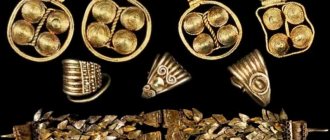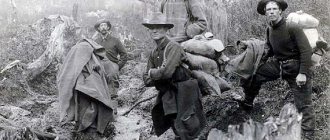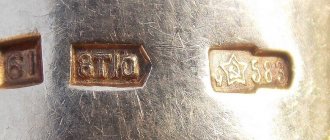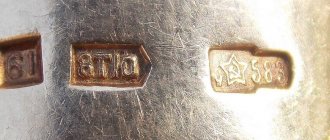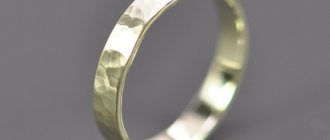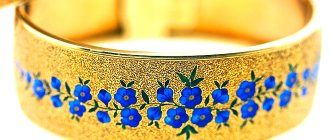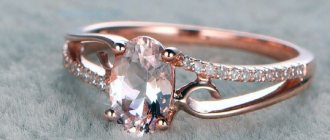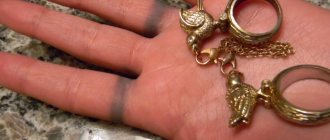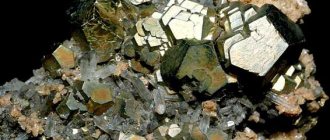Ancient times
The history of gold, the history of the precious metal, began in ancient times, more than 5,000 years ago. The ancient inhabitants of Egypt already from that time understood about its strength and power. The solar metal was revered in the same way as the gods and legends were made about it. And fashionistas dreamed of having gold jewelry, because it was believed that they brought happiness and good luck. At a certain period, only the highest ranks of society could afford gold, and ordinary people were strictly forbidden to wear jewelry.
In ancient times, people made various jewelry from gold, mainly they depicted the animal and plant world, and the minting of the first gold coins from gold began. Every ancient country dreamed of having the sunny, revered metal, and very often blood was shed because of gold. Warriors for metal captured more and more countries, and it passed from one state to another until Rome collapsed. After this, all reserves of the gold metal were scattered throughout the world.
Major historical events in the development of gold
History has many significant events in the development of gold. It has come a long way from ancient times to our time.
The table reflects a brief chronology of the world’s “golden” history:
| 1500 BC e. | Gold debuted as a recognized standard of exchange in international trade. |
| 50 BC e. | The ancient Romans first issued a gold coin. |
| 1066 AD e. | The Norman conquerors firmly established the British monetary system. |
| 1284 n. e. | England issued the gold florin, the country's first major gold currency. |
| 1900 AD e. | The United States officially went on the gold standard. |
| 1971 e. | President Nixon ended the gold standard in America. |
| 1978 e. | There is increasing interest in buying bullion to store value and hedge against inflation. |
| 2011 e. | The price of gold reached a record high of $1,923 per ounce. |
Over the past 50 centuries, national currencies have undergone many changes, coming and going. But this precious metal remains a valuable resource to this day and is not going to lose its position in the near future.
Indian gold
Yellow metal actually played a big role in the life of ancient peoples. But in addition to power and wealth, it also brought destruction. For example, in the 16th century, Indian territories were captured by a local ruler. The Incas paid the Spaniards in gold for him for almost 3 months, but they were never able to save him.
The glitter of gold blinded the conquerors, and they moved inland to search for new golden treasures. The capture of the main city of the Incas took place almost without a fight; the capture and death of the leader undermined the spirit of the Incas. Eyewitnesses claim that the capital was almost entirely made of solar metal; the cladding of the buildings literally blinded with its golden shine.
To this day, scientists and travelers around the world are searching for this lost city. Many of them want to feel the power and strength of gold, replenish their wealth, and some just want to touch the legend and spirit of that time.
stories about gold in the world, almost all of them are based on real events of ancient times.
Gold jewelry art of Byzantium
As the history of the Roman Empire progressed, gold jewelry became increasingly rich. By 325, Constantine the Great declared Christianity the official religion of the Roman Empire. From this time on, the simple and sharp forms of early Roman jewelry gave way to more complex and elegant pieces with brightly colored stones.
From this period begins the Byzantine period of Roman history, when the capital was Byzantium (Constantinople, now Istanbul). The decorations become ornate, airy, and lace-like. Gradually, due to changes along the eastern trade routes, the supply of precious stones decreased. Gold items began to become part of the symbolism of the dominant Christian church and the growing power of kings. During the Dark Ages and the early Middle Ages, the talents of jewelers served mainly the church and state. The 6th and early 7th centuries are marked by excellent examples of Byzantine jewelry, which include coins.
However, the growing power of Islam and, to some extent, the shift to less ostentatious luxury in the private and ecclesiastical life of Byzantium meant that the sun was setting on the ancient traditions of Greek and Roman goldsmiths.
History of gold jewelry: From the Middle Ages to the present day
Golden fever
Currently, the world reserve of this precious metal is slightly more than 160,000 tons. Miners during the Gold Rush made a major contribution to this reserve. The first fever arose in the 17th century in Brazil. About a million people became infected with the gold mining disease. There were a huge number of people at the mining sites, among them were not only ordinary people who wanted to get rich, but also criminals engaged in ordinary theft. It was especially dangerous to be at the sales sites, because you could not only sell your precious loot, but also lose your life for it.
The pursuit of wealth in the form of gold captured many countries, and the fever did not spare our country. At the beginning of the 19th century, miners discovered gold deposits in Siberia, where people flocked for solar metal, risking their lives.
Artisanal mining method
Nowadays, some of the gold is also extracted manually, but gold miners have improved this method by using an electronic device - a metal detector (metal detector), which shows the presence of metal in the soil and the depth of its occurrence. Usually, prospectors go for gold to places where mining has already been done and stopped for some reason. This is understandable: if industrial development is not economically feasible, then it is quite possible to find a little more manually (this method is called residual).
Another process improvement is dredging. This is a set of trays through which soil is sifted or washed mechanically. Prospectors mainly explore the mouths and banks of rivers. There you can find terrace or bottom deposits. Heavy particles of precious metal settle to the bottom, filling the recesses and depressions.
In some countries, it is prohibited for individuals to mine gold. In any case, this is a licensed type of activity - you need to draw up a lot of documents. And, for example, in the USA and Australia, citizens can legally engage in the mining business. Obtaining a license is easy and inexpensive (about $30).
Gold miners worldwide account for about a ton of the precious metal. But this figure is quite approximate. After all, where mining activities are prohibited and records are not kept, it is difficult to calculate exactly how much gold floats away from the watchful eye of the state.
In addition, this metal is sometimes mined not as a mineral in natural conditions, but also from radio components, circuit boards, processors, broken jewelry (including gold-plated ones), etc. For example, the refining (evaporation) method is a complex procedure that requires knowledge and caution. Refining is carried out using aqua regia (a mixture of hydrochloric and nitric acids) as a solvent. “Home” miners melt the resulting metal in a crucible and obtain an ingot (more precisely, an ingot) of gold.
Many large companies find it profitable to hire miners.
In industry
The special properties of the metal have given it special significance in industry. It is used:
- in the transport industry;
- in energy;
- in the chemical industry;
- in telecommunications;
- in nanotechnology;
- aviation;
- in the space industry.
For medicinal purposes, gold is also of great importance. It is used for dental work, for rejuvenation and for the treatment of certain diseases, such as:
- colds;
- heart disease;
- diseases of the nervous system;
- development of atherosclerosis.
Gold of Russia. Part 1
© nedradv.ru
Ural - Father
The history of gold mining in Russia goes back more than 300 years.
Special merit in the history of Russian gold belongs to the Urals. The first Russian deposit of native gold was found in 1745 here.
The discoverer was a peasant - schismatic Erofey Markov from the village of Shartash near Yekaterinburg. It was on this site that a mine was sunk in 1747, which gave rise to a rich mine known as the Original.
© expert-oil.com
Since 1748, about 340 kilograms of gold have been mined there. By the beginning of the 19th century, about 70 more gold veins were discovered in the vicinity of this mine, where mines were laid and began to operate. It gradually became clear that Erofei Markov had discovered a unique world-class deposit - the famous Berezovskoye deposit, which was included in geological textbooks of all countries of the world. It was distinguished by an unusually high gold content: 450 g/t.
© expert-oil.com
Nugget "Great Triangle", 36 kg, found in 1842
By the end of the 18th century. In the upper reaches of the Iset River basin, 140 gold strips were identified, the development of which was carried out by dozens of gold mines.
But all this gold was ore gold - it was obtained through the development of gold-containing ores. There was catastrophically little of it for the needs of the state.
The next date - 1814 - became significant in the history of the Ural, Russian, and world gold mining. This year alluvial gold was discovered in the Urals. This was done by Lev Ivanovich Brusnitsyn, who had already had significant success in gold mining.
While examining the dumps of the Berezovsky mine, he noticed grains of gold that were completely different from those that had undergone factory processing. The grains found are round, without any traces of passage through crushing crushers. It took Brusnitsyn a lot of work to find the place where the unusual pieces of gold fell into his tray, and he reached the rich gold-bearing sands. He also proposed methods for their development and sand washing technologies.
Empire Gold
Before the discovery of the Ural gold placers, Russia's share in world gold production was only 3%. Soon after the start of alluvial gold development, Russia became one of the leading gold-mining countries on the planet. In total, during the pre-revolutionary period in the Urals, about 750 tons of gold were extracted from the depths.
© avatars.mds.yandex.net
After the discovery of the first placers, the gold rush swept through the entire Russian Empire. The richest deposits were discovered in Siberia. Here, since 1827, over 10-15 years, numerous areas of gold placers were discovered near Achinsk, Minusinsk, Yeniseisk, Verkhneudinsk, Barguzin, Verkholensk, Vitim, Olekminsk, Chita and other cities.
From 1828 to 1861, 570 tons of gold were mined in 372 mines in Siberia.
© content-3.foto.my.mail.ru
Gold production in the Russian Empire reached its maximum in 1910, when 62 tons were mined, at that time it was fourth in the world after South Africa, the USA, and Australia.
In 1914, the gold reserves of the Russian Empire were the largest in the world and amounted to 1,400 tons.
Stalin's breakthrough
The years of the Civil War and post-war hard times scattered Russia's gold reserves. Both the whites and the reds “worked hard” on this. Production decreased to 10-20 tons per year. In 1928, only 150 tons of gold reserves remained in the state reserve.
However, the course taken at the end of the 20s to industrialize the country required gold. Lots of gold.
To revive the industry in the USSR, Soyuzzoloto JSC was created, headed by engineer Alexander Pavlovich Serebrovsky, who immediately went to the USA to learn from experience, purchase equipment and hire specialists.
Geological parties were sent to all corners of the USSR to search for new deposits. Beginning in 1930, the Bolsheviks began producing equipment for the gold mining industry at the Irkutsk Heavy Engineering Plant.
© avatars.mds.yandex.net
The first Kolyma expedition, in the center is geologist Yuri Bilibin, one of the discoverers of Kolyma gold.
In the fall of 1931, the Dalstroy trust was organized, which was supposed to mine gold in Kolyma and Indigirka. Already in the same 1931, Dalstroy was given the task of extracting 2 tons of gold. The following year, the production plan was increased to 25 tons.
© expert-oil.com
Gold production in the country began to grow rapidly. In the 1930s, the Soviet Union vigorously increased its production of the “yellow metal”. In 1933, 110 tons were mined, in 1938 - 139 tons. In 1940-41, according to estimates, gold production reached 160 tons.
© primamedia.gcdn.co
The bulk of the production was provided by Dalstroy; in 1940, its enterprises produced 80.6 tons of metal. By 1941, the territory of Dalstroy covered 2.2 million km2.
© avatars.mds.yandex.net
In the second half of the 1930s, the USSR took second place in the world in gold mining, overtaking the USA and Canada and second only to South Africa (where annual production before the Second World War approached the 400-ton mark).
The country's gold reserves grew rapidly, increasing by 300 tons annually. By 1940, the USSR's gold reserves reached a historical maximum and amounted to 2,800 tons.
Which was very useful in the Great Patriotic War. Gold, which was mined in gold mines and mines at the cost of dedicated labor and even at the cost of life, was immediately used to pay for goods received under Lend-Lease. The feat of Soviet geologists and workers is still awaiting its chroniclers.
After the war, gold was used to restore the national economy.
By the time of Stalin's death in 1953, the USSR's gold reserves stood at 2,049 tons.
https://www.expe...av-Rossii.html
https://zolotod...u/article/11637
https://zen.yan...ffcd13aefc597d5
https://zolotod...u/article/12374
Jewelry industry
Gold jewelry has been made for more than 5 thousand years. The history of gold and gold jewelry walk together all the time.
Jewelry still has a certain value. Over time, manufacturing methods have changed and jewelry made from that metal has changed slightly.
Modern jewelry has become more aesthetically pleasing, but it also represents wealth and a certain status. The range of jewelry today is very large, almost anyone can choose the thing that they like. Only now jewelers no longer make them from the purest material; modern gold jewelry consists of alloys.
Gold jewelry in the culture of the ancient Egyptians
Unlike the Sumerians, the ancient Egyptians had large reserves of gold. This metal was mined in Nubia, an area between the Nile and the Red Sea, south of the modern Egyptian city of Aswan and north of Khartoum, the capital of modern Sudan. There is an assumption that the name Nubia comes from the ancient Egyptian word “nub” - gold.
The skill of jewelers increased very quickly. The Egyptians mastered the art of alloying gold to increase its hardness and obtain different color variations (alloying is the addition of other metals to improve the properties of the base). They developed casting technology, including lost wax casting. It is widely used in our time - jewelers call it “wax”.
It is believed that the Egyptians learned to determine the purity of precious metals by their color when heated in a fire. The most significant legacy of ancient Egyptian jewelers is the treasures found in the tomb of Tutankhamun, who died around 1350 BC. The items in the tomb—necklaces, breast ornaments, earrings and a mask on the mummy's head, made of pure gold, chased and polished—were described by archaeologist Howard Carter, who found the tomb and was the first to see them, as “most amazing things.” The tomb of the boy king, who ascended the throne at the age of 10 and reigned for approximately the same period, has preserved for us the greatest monuments of ancient Egyptian art, which evoke admiration several millennia later. Tutankhamun's body was placed in an elaborate sarcophagus made of solid gold sheets 2 mm thick, weighing more than 110 kg. On the mummy's head was a mask made of forged gold weighing 9 kg. It so realistically repeats the facial features of the pharaoh that it is even easy to notice the similarity with existing images of the pharaoh’s ancestors.
The tomb also contained a throne made of wood, lined with gold and decorated with faience, enamel, glass and precious stones. On the throne was depicted Tutankhamun, sitting in a free pose (which is not typical for images of pharaohs of that time), and his wife Ankhesenamun covering his shoulder with incense.
The treasures of Tutankhamun's tomb are usually displayed in the Cairo Museum, but always attract millions of visitors when occasionally exhibited in other countries. They are symbols of humanity's success in processing and making gold jewelry. The forms of Egyptian goldwork remained remarkably constant for almost two thousand years until, after the conquest of Egypt by Alexander the Great, they began to be replaced by Greek and then Roman styles.
Exchanges
Gold can bring a lot of money at the moment. Many people make fortunes from the difference from buying and selling precious metals. In the modern world, this can be done without even holding it in your hands. Online exchanges give any broker the opportunity to buy and sell this metal remotely. Using long-term charts, you can study what the history of the gold price was at one time or another. And we will see that in the long term, investing in gold has always been profitable. Read more about investing in gold in this section.
How to find solar metal
Where is gold mined? Mainly in several countries: Australia, China, South Africa, USA, Peru, Russia and Uzbekistan. This does not confirm that it is not present in other countries, but its concentration does not allow for significant industrial development and production. Thus, this precious metal is quite successfully extracted from the subsoil in Mexico and Indonesia, Papua New Guinea and Kazakhstan. But these countries are not among the world leaders.
Mining the most precious metal is very difficult and expensive. The process consists of several stages.
- Reconnaissance and determination of the site contour.
- Assessment and analysis of gold-bearing vein volumes from the point of view of economic feasibility.
- Creation of infrastructure for industrial production.
- Extraction of gold-bearing rocks: ore, sand.
- Precious metal extraction.
Some gold is extracted by artisanal methods, and industrial mining is carried out using closed (in mines, pits) and open (from a pit) methods.
